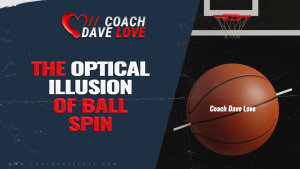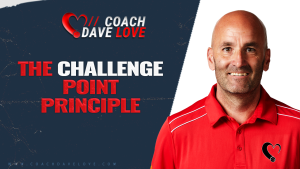Why This Matters
NBA teams are constantly chasing marginal gains, and one of the clearest areas of evolution has been shooting — not just how often teams shoot, but how well. Over the past two decades, three-point shooting has gone from a niche skill to a fundamental requirement. As a result, shooting coaches — once rare — are now key pieces of the coaching staff.
But what separates shooting work that sticks from what fades under pressure? That’s the question this article tackles. Drawing from a peer-reviewed research paper I co-authored — originally developed by Dr. Fabian Otte in the context of elite soccer goalkeeping and adapted here for basketball shooting — we’ll explore how an evidence-based, individualized, and periodized approach to skill development — known as the Periodization of Skill Training (PoST) Framework — can guide shooting improvement in both off-season and in-season contexts.
Context: The Modern Shooting Landscape
The NBA isn’t just seeing more three-point attempts — it’s seeing more players expected to shoot them. Traditional role constraints (e.g., “bigs don’t shoot”) are disappearing. Every player is now expected to contribute as a scorer. That means development can’t be one-size-fits-all.
To meet these demands, teams are creating more individualized training opportunities — outside of traditional practice — where shooting coaches can work with players to develop specific habits. But for this to be effective, training must be more than reps. It needs to be structured, personalized, and timed properly.
Theoretical Foundation: Ecological Dynamics and the PoST Framework
At the heart of this approach is a theory called Ecological Dynamics — a framework for understanding how athletes adapt to their environment. Rather than focusing solely on technical perfection, ecological dynamics emphasizes adaptability — how players perceive and respond to the conditions around them.
The PoST framework builds on this theory by organizing skill training into three stages:
- Movement Coordination Training
- Skill Adaptability Training
- Performance Training
Each phase addresses a different point in a player’s development, with different goals and design principles. Crucially, this is not a linear model. Players move back and forth between stages as needed, rather than attempting to ‘master’ a particular phase before moving on to the ‘next’. A player might revisit coordination work deep into the season, or challenge themselves with adaptability training early in the off-season. It’s about meeting the player where they are, and matching the training to the context.
By applying this framework, we can stop guessing about when and how to teach new skills and start aligning training with the realities of the NBA schedule and player learning needs.
The Three Pillars of Skill Learning in This Approach
Before diving into the stages, it’s worth understanding three key ideas from motor learning science that shape this whole framework:
Adaptability through variability
- Great shooters aren’t just consistent — they’re adaptable. They need to shoot well off balance, with pressure, against movement. Practice should reflect that.
Degrees of Freedom
- Players have countless ways to move (joints, limbs, timing). The challenge is helping them find efficient, functional movement patterns that work for them — not prescribing a one-size-fits-all technique.
Repetition Without Repetition
- This classic phrase means the goal isn’t to repeat the same shot, but to solve similar shooting problems in slightly different ways — just like in games.
Applying the PoST Framework to Shooting Development
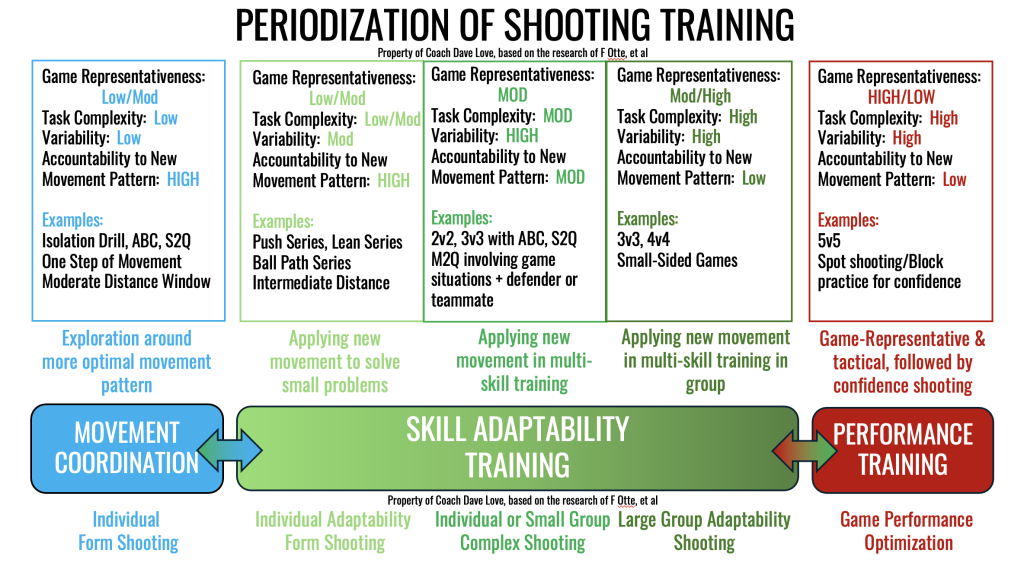
1. Movement Coordination Training (MCST)
Goal: Rebuild or refine a shooting motion in a simple, low-pressure environment.
This is where many “weaker” shooters need to start. Think of it like laying a new foundation. The goal isn’t game-speed reps — it’s helping players explore and stabilize a different movement pattern.
We keep task complexity low and reduce distractions so players can feel the difference between old and new. For example:
- Removing the guide hand to isolate the shooting hand.
- Using drills like ABC or Slow to Quick to control the pace of the lift.
- Adding subtle constraints like “only one step allowed before the shot” to encourage better posture and balance.
🧠 Key idea: This isn’t just “form shooting” — it’s targeted, accountable, and individualized practice with a clear habit in mind.
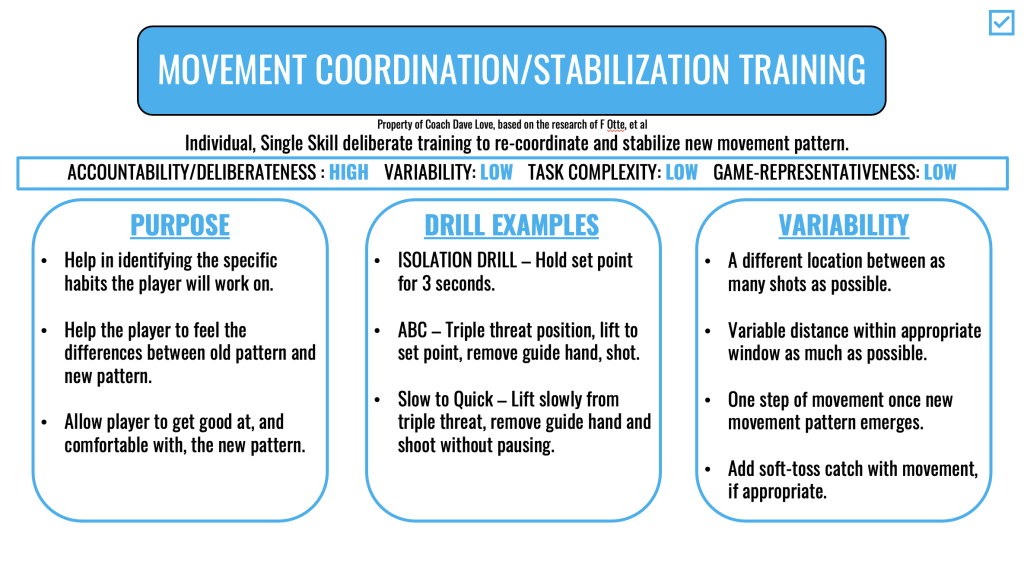
2. Skill Adaptability Training (SAT)
Goal: Help players apply new movement habits under pressure and variability.
Many players — and coaches — skip this step, jumping from “form shooting” straight into “game-speed reps.” But without this middle phase, the new habits rarely transfer.
SAT includes three sub-stages:
a. Movement Variability (SAT-MV)
This phase introduces controlled chaos. We start layering in variability — different passes, movement, balance challenges — but still keep the setting relatively simple. Think:
- Catching on the move.
- Shooting after a push or lean.
- Handling bad passes.
The goal? Make the new habit survive in less-than-ideal conditions.
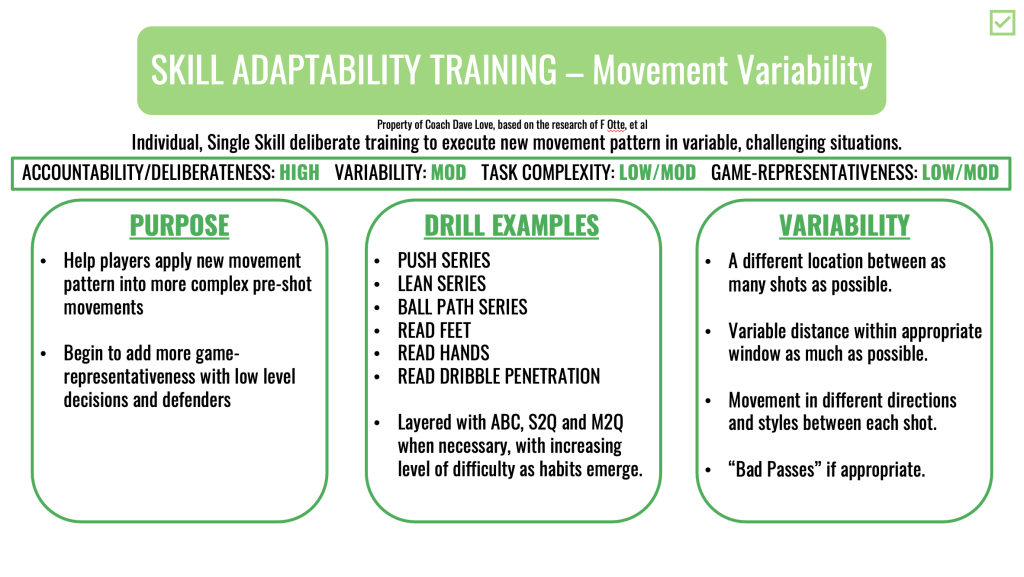
b. Complex Training (SAT-CT)
Now we introduce teammates, defenders, and decisions. The environment becomes moderately complex and representative of the game.
For example:
- 2v2 and 3v3 games where players must shoot after a read (e.g., screen coverage).
- Scoring rules or constraints that nudge players toward using their new habit.
We don’t open the playbook entirely — we still constrain some options to give the habit time to stabilize.
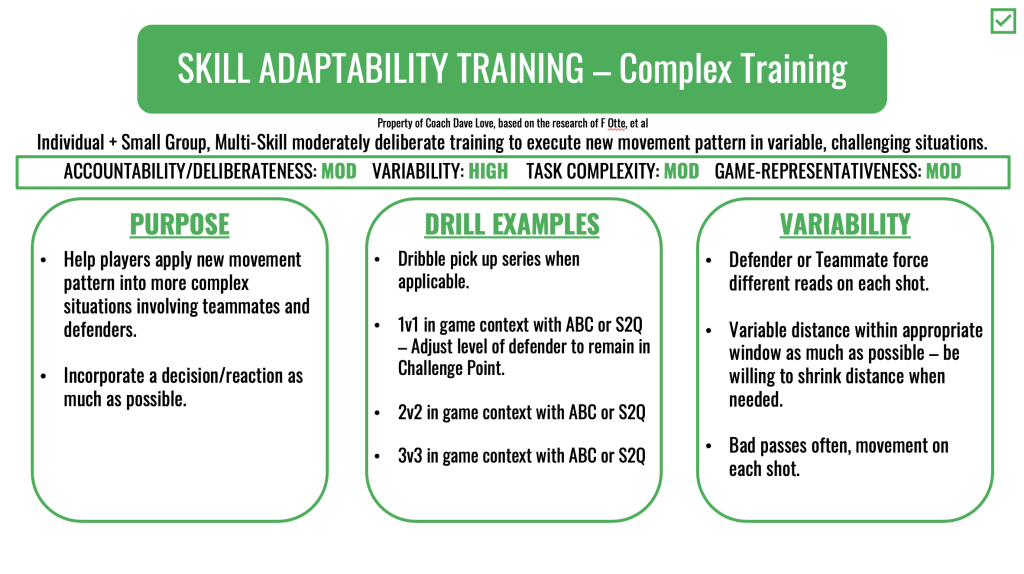
c. Team-Based Training (SAT-TBT)
This is the bridge to full gameplay. Practice is now highly variable and realistic, but we maintain a thread of accountability to the movement we’re working on.
We might embed a shooting habit focus into:
- 3v3 or 4v4 actions like flare screens or dribble hand-offs.
- Small-sided games with constraints that subtly highlight the targeted movement.
🧠 Key idea: This stage is where new habits gain true flexibility and transfer — they’re tested, refined, and contextualized.
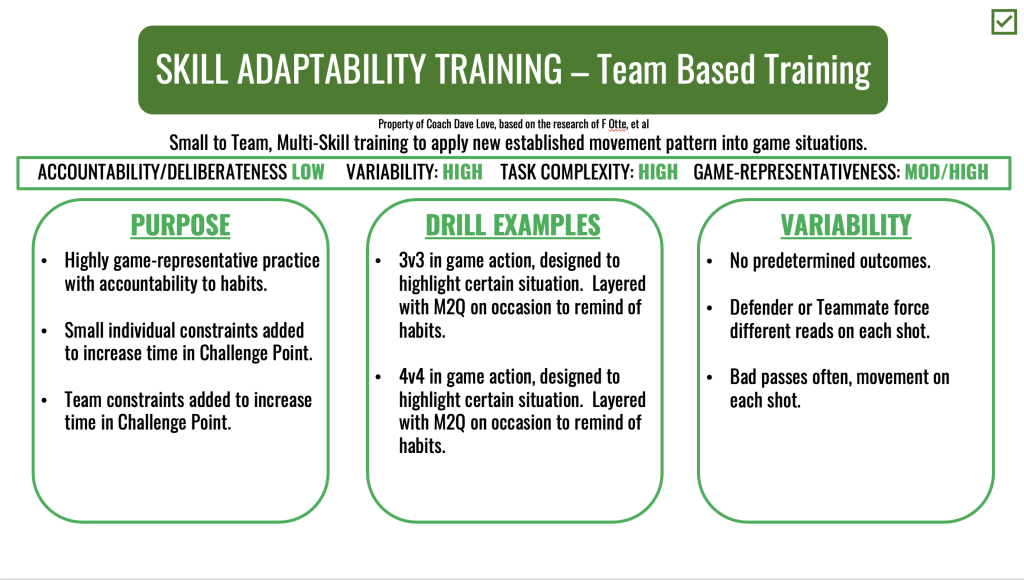
3. Performance Training (PT)
Goal: Maximize performance — not develop new skills.
This is game prep, not development. This section can feature two sub-phases. One were practice is essentially game-like and live. And a second phase, usually just before the game, where ee reduce variability and complexity to reinforce confidence and consolidate learning. This includes:
- Team tactical walk-throughs.
- Simple shooting routines for rhythm and feel.
- Low-complexity spot shooting before games.
Confidence matters. By removing challenge temporarily, we let players feel ownership over their skills right before competition.
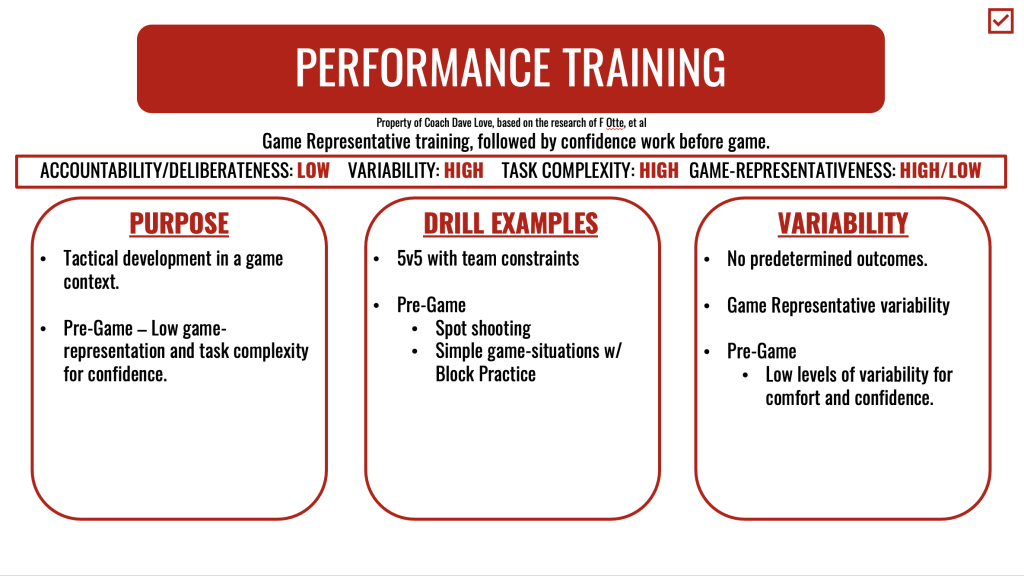
Applying the PoST Framework to Shooting Development
One of the most powerful uses of the PoST framework is knowing when to focus on each phase, and how to move between them.
Off-Season (May–Sept)
This is the window for major habit changes. We might spend:
- May/June: MCST (rebuild mechanics).
- July/Aug: SAT (stress test new patterns).
- Sept: PT (simulate game prep and confidence).
This is where “weaker” shooters might overhaul their hand positioning or balance. Meanwhile, “proficient” shooters might refine coordination in specific contexts (e.g., shooting on the move).
In-Season (Oct–April)
Now the calendar is tight. Games, travel, recovery — it’s harder to carve out development time. So we shift focus:
- Game days = PT.
- 1–2 days before games = SAT.
- Longer breaks (e.g., All-Star, home stretches) = MCST (if needed).
Even if only a few minutes are available for a player on the road, we can be intentional — not just “get shots up,” but use those minutes for a targeted SAT or MCST intervention.
Final Thoughts: Why This Framework Matters
Too many shooting routines rely on outdated assumptions — “same shot every time,” “perfect form,” or “game-speed shots only.” But elite performance isn’t just about repetition — it’s about adaptability.
The PoST framework, originally developed by Dr. Fabian Otte in professional soccer and adapted here for basketball shooting, gives coaches a systematic way to design skill development over time. It allows for:
- Tailored plans for each player.
- Better use of limited time during the season.
- A bridge between biomechanics and real-world application.
And most importantly, it gives players the tools to adapt their skills — not just repeat them — in the unpredictable environments of NBA basketball.
If you’re building a shooting culture, running a player development department, or just looking to get more from your workouts — this framework can help.
And if you’re curious about the academic foundations of all this, I’d be happy to share the original research paper I co-authored with Dr. Otte on the topic.
Let’s build better shooters. Smarter. Not just harder.
